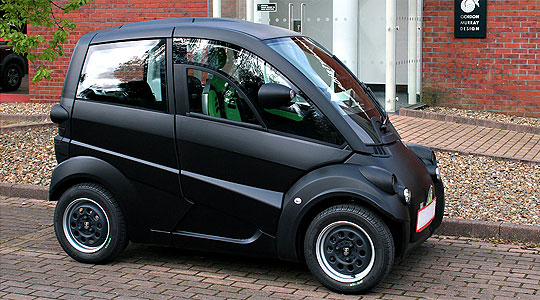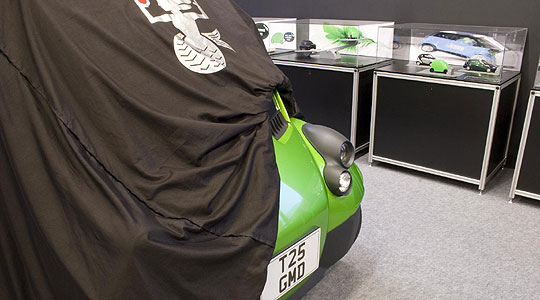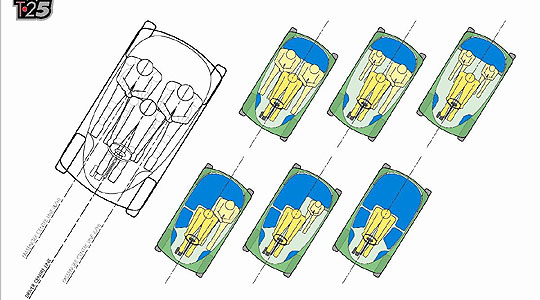
There is arguably just one man currently following in the footsteps of automotive engineering greats such as Colin Chapman, Ettore Bugatti or Ferdinand Porsche, says our design expert Chris Hrabalek. This man is Gordon Murray. Father of the legendary BT46B Formula One ‘Fan Car’, the iconic McLaren F1 road car and, more recently, the creator of possibly the most radical city car concept yet: the T.25 and its electric brother the T.27.
One can count the number of truly revolutionary transportation concepts since the invention of the wheel on two hands: and radical city commuters within the last century on a single hand. The Austin Mini, the MCC Smart and the Toyota iQ have one thing in common: an innovative technical package, product integrity and a perfect analysis of social needs at the time of creation – a perfect blend that’s car-lengths ahead of simply supplying mass motorisation.
Gordon Murray’s announcement after his departure from McLaren Cars – that he is working on a new class of vehicle, a new British icon for the 21st Century – certainly raised an eyebrow or two among fellow enthusiasts. And were it anyone else but Gordon, it wouldn’t have been worth a footnote in even the most dedicated of anorak forums. However, with the South African-born engineer’s unparalleled track record, it was clear from the start that the automotive world will need to buckle up for something truly special.
The T.25 is a tiny three-seater and the pioneer in an upcoming nano-class of driver-focused economy cars; a description which seems contradictory in itself and possibly the closest thing to a rounded square that the car world has ever seen. Yet it seems to be the only possible answer for sustainable mobility in the years to come. A weight of less than 650kg with a footprint smaller than that of an MCC Smart, yet the potential to carry three adults with their luggage in comfort, deserves an honorary PhD even while still on the drawing board.
Unlike the majority of so-called ‘city cars’ that often derive from already existing platforms, wrapped in retro-clothes of their infinitely more authentic ancestors, the T.25 was born, unsullied, from a clean sheet of paper. Murray’s legendary determination to question every detail of even the smallest element proved, at Le Mans in 1995, that in such areas a healthy dictatorship can be better than an unhealthy democracy.

Although the car has yet to be revealed in its full and final form, there are just enough published spy shots (or purposely leaked teasers) to make out the general size (or lack of it), proportion, stance and design themes of the T.25. Wheels at the furthest possible points in each corner, zero overhangs and an unusually narrow DLO (daylight opening) suggest extremely good Cd figures. The first impressions of this super-compact but high-stance vehicle look like an MCC Smart Plus spiced with BMW C1 scooter.
Parked next to a Toyota iQ (or an Aston Martin Cygnet), the T.25 will look like a Lotus Elise MK1 parked next to a Jaguar XJ220. Murray’s brave decision to opt for a revolutionary single door on the T.25 will have to prove its water resistance as well as its possible accessibility advantage, should the car get permission to park perpendicular to the kerb. Visionary, too, is the belief that two T.25 owners will be allowed to travel side-by-side, sharing a single motorway lane.

The final design judgement on the T.25 will have to be passed once the car is revealed in its final styling shape – and, even more importantly, once it can be experienced on the road. At present, I have no doubt that Gordon Murray will succeed and no doubt that the T.25 will become yet another design classic to be conceptually quoted in years to come.
Text: Chris Hrabalek
Photos: Gordon Murray Design
ClassicInside - The Classic Driver Newsletter
Free Subscription!




